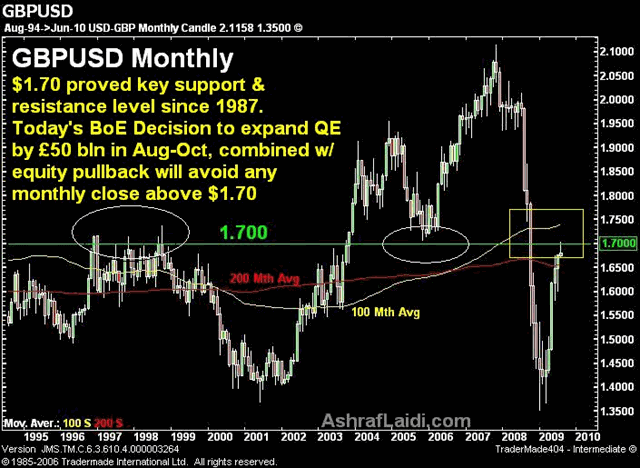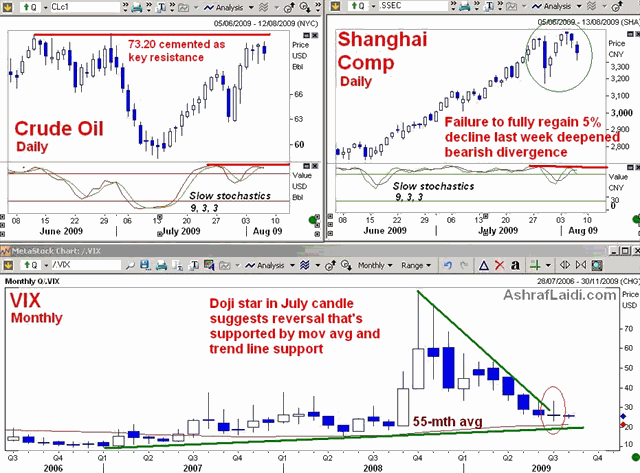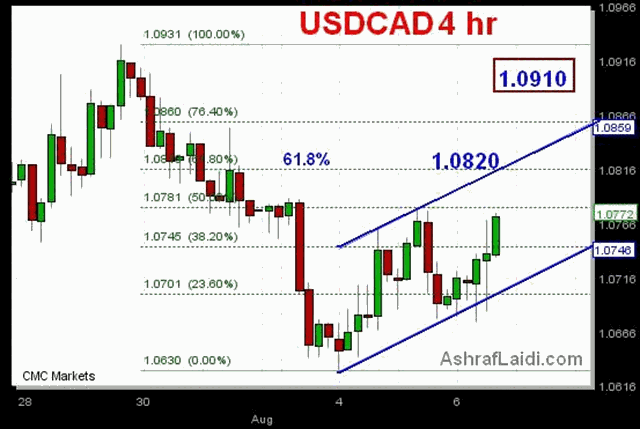Quantitative Easing & Currency Strengthening
Sterling Contracts as BoE Expands QE
Sterling dropped across the board today after the Bank of England expanded its quantitative easing program by adding an extra 50 billion of asset purchases into the next 3 months. Yields on 10 year guilts drop 35 bps to 3.57%, GBPUSD shed 200 pts, while EURGBP shot up 100 pts to 0.8555, further proving the 0.84 support to be a key foundation in the cross pairs cyclical ascent. 

QE Easing vs. Currency Strengthening
Since the Bank of England has frequently addressed the positive impact of currency weakness in stimulating the economy, today's QE expansion was no major surprise, especially as it forecasts GDP growth contraction and sub-2% inflation well into Q1 2009. The BoE must also have been concerned with sterlings resurfacing positive response to improved risk appetite (mainly against USD). The other main risk to a definitive conclusion to QE is the potential negative impact on equity indices. Thus, tactically, the BoE could not afford to bear the currency repercussions from concluding QE, especially at a time when USD weakness has become synonymous with global recovery.
Building Blocks to Global Risk Aversion?
The charts below illustrate what could be the building blocks to a potentially concerted downturn in global risk appetite, ranging from peaking oil prices (failure to regain $73 triple top), struggling Chinese stocks (failed recovery from the years biggest daily decline) and prolonged signs of a well cemented bottom in the VIX (July chart showed classic sign of indecision at the bottom of the downcycle). With the US equities-oil correlation as high as 0.85 this past 8 weeks, the unsustainable run-up in the fuel seems to justify the bearish divergence in the oscillators throughout US, UK and Eurozone equity indices, as well as the Shanghai Composite Index below.

Loonie's Tipping Point
CAD's weakness is highlighted by its muted response to the latest spike in oil prices as the impact of Wednesdays interventionist remarks from Canadian Finance Minister Flaherty warning against excessive currency strength. But with US crude increasingly struggling to overcome the $73 resistance, Canadas jobless still on the rise and verbal intervention at its most vocal since last year, the downside risks for the loonie are growing appreciably. This renders equities as the potential tipping point for concerted CAD selling, especially as major US equity indices (S&P500 and Dow) have shown a 0.75 correlation with the Canadian currency (as expressed in USDCAD and CADJPY).
Readers have already been warned of the incipient recovery in USDCAD on Monday after bottoming out at the trend support of 1.0690. Our interim target of 1.0780, is expected to be followed by 1.09. Friday's release of Canada's July employment report (11:00 EST 1.5 hrs before US payrolls) could be the catalyst for prolonged weakness as Canada's unemployment rate may hit as high as 8.9% from June's 8.6%, with payrolls expected -20K after -7K.

For more frequent trades and updates, follow us on http://twitter.com/alaidi







